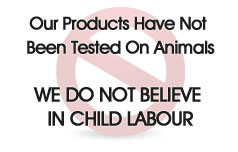 Email :
Email :
enquiry@dehlvi.com
![]() Toll free :
Toll free :
011-42141431
Search for Dealer locator or Dehlvi Approved clinics
 Email :
Email :
enquiry@dehlvi.com
![]() Toll free :
Toll free :
011-42141431
Search for Dealer locator or Dehlvi Approved clinics

Search for Diseases :
Description
A disease in which cells throughout the liver are progressively destroyed. They are replaced by areas containing nomal new cells but also by much scar tissue, which alters the structure of the organ.
Persons most commonly affected: Adults of both sexes.
Organ or part of body involved: Liver
Symptoms and indications: General weakness a vague feeling of being unwell, loss of appetite, loss of weight, and a loss of interest in sex. There may be a dull abdominal ache, nausea, constipation, or diarrhoea.
Causes and risk factors: Alcohol abuse, hepatitis C virus, obstruction of the external bile ducts by a stone, scar, inborn defect, or tumor, use of certain medications, syphilis and passive liver congestion. Obesity has recently been recognized as a risk factor in nonalcoholic hepatitis and cirrhosis.
Prevention: Avoid liver toxins. Cirrhotic patients must completely avoid alcohol. Alcohol accelerates liver failure and hastens death in cirrhotic patients. In addition, even over-thecounter drugs, such as acetaminophen (Tylenol), should be avoided because they can be toxic in cirrhotic patients. Juice therapy helps the liver detoxify toxins from the body. Patients should mix one part of pure juice with one part of water before drinking. Eat smaller meals. To avoid overworking the liver, five or six smaller, lighter meals per day are recommended. Avoid fatty foods, especially those prepared with animal fats or hydrogenated oils and processed foods. These types of foods put additional demands on the liver. Eat only lean proteins (containing no fats) and in limited amounts. Vegetable proteins, such as those found in legumes or tofu, and whole grains are preferred. High protein intake causes increases in ammonia levels in the blood, possibly resulting in mental confusion, and in severe cases, coma. However, do not severely limit protein intake, as this may cause protein deficiency and impair healing process. Increase consumption of fruits and steamed vegetables. Fruits and vegetables are easy to digest, thus less work for the liver. In addition, they are good sources of vitamins, minerals, and antioxidants that help the liver detoxify and heal. Practice intermittent fasting. Protect yourself against hepatitis B and C.